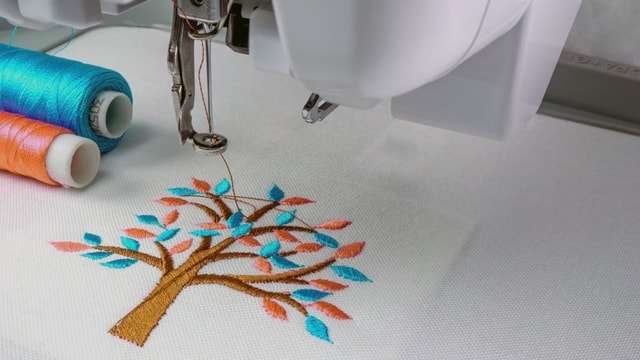
In the quest to improve the productivity of embroidering products, the production manager must understand all of the factors that come into play. Generally, the first and foremost concern is the number of stitches in the design. Everything about embroidery relates to the number of stitches and how many stitches can be generated per day. In addition there are other important components to take into consideration. Team SW takes a closer look…
How the design is digitized, what type and quality of thread is used, which machine is chosen for which job, layout of the machines, fabric and price point of the garment, and sewing stitch densities are just a few of the factors to be considered when embroidery is undertaken. In today’s production environment when speed is also a determining factor many important aspects must be addressed when looking to improve productivity.
Digitizing
As with garment manufacturing the single most important factor is the initial design. In embroidery, this function is accomplished by the “digitizer.” He/she is the person who converts the artwork into machine readable commands for the embroidery machine. The digitizer determines how many stitches will be in the design, how many thread trims will take place, how many colour changes will take place, and how smoothly the design will run.
The digitizer also determines how and where the stitching will take place. He/she decides whether one colour is sewn throughout the design or if an area is completed independent of the number of trims and colour changes required to sew the area. These are decisions which can dramatically affect sewing time. The digitizer decides if there should be an underlay, how many underlay stitches will be used and the stitch density. It is imperative that the digitizer is well trained and constantly receives feedback from the production department.
Stitches in the Design
Total cycle time is always dependent on stitch count in the design. Reduction in stitch count will always reduce sewing time; however, it may not be the most important factor or most controllable in the effort to improve productivity. The relative importance of the number of stitches in a design depends on the actual sewing time compared to the other factors involved in the total production cycle.
More effort should be put into cutting stitch count in larger designs whereas more effort should be put into reducing handling and loading time with low stitch count designs. One method of reducing stitch count is replacing fill stitch by satin stitch. Converting the design, where applicable from fill to satin can reduce stitch count by 75%. Another way to decrease stitch count, while increasing sewing quality is to vary your density throughout your design. As columns become narrower, density should be decreased. Some software performs this function automatically.
Digitizing Software
Recent improvements in embroidery digitizing software address many of the areas which can cause sewing problems and increase sewing time. Some features available today are “auto clean of small stitches” to help eliminate thread breaks and the addition of the “highlight function” to alert production to possible problems such as long stitches which will decrease sewing speed of the machine and needle penetrations in the same place which may cause thread breaks.
Lower the Density
Where stitch counts in the design are high, significant improvements in sewing time can generally be attained by reduction of stitch density. This can usually be done without materially affecting quality. The tendency of many digitizers is to add stitches to ensure good coverage. Proper use of underlays offers the opportunity to reduce stitch count. Many digitizers refrain from their use of an attempt to reduce stitch count. Actually, proper use of underlays can reduce the number of top stitches without affecting the look of the design.
For stitch lengths up to 3/16″, most machines run at full speeds (machines’ speeds reduce at longer stitch lengths). This means that the longer the stitch, up to the 3/16″ the more thread is laid down per stitch. Small letters lend themselves to angular stitching therein reducing sewing time without reducing coverage.
Appliqués, Screen Printing and Transfers
Utilization of multimedia can add life to designs and improve productivity. These time reductions must be balanced against the extra expense of the applique, etc. and the extra time for positioning during the sew cycle.

Post a Comment